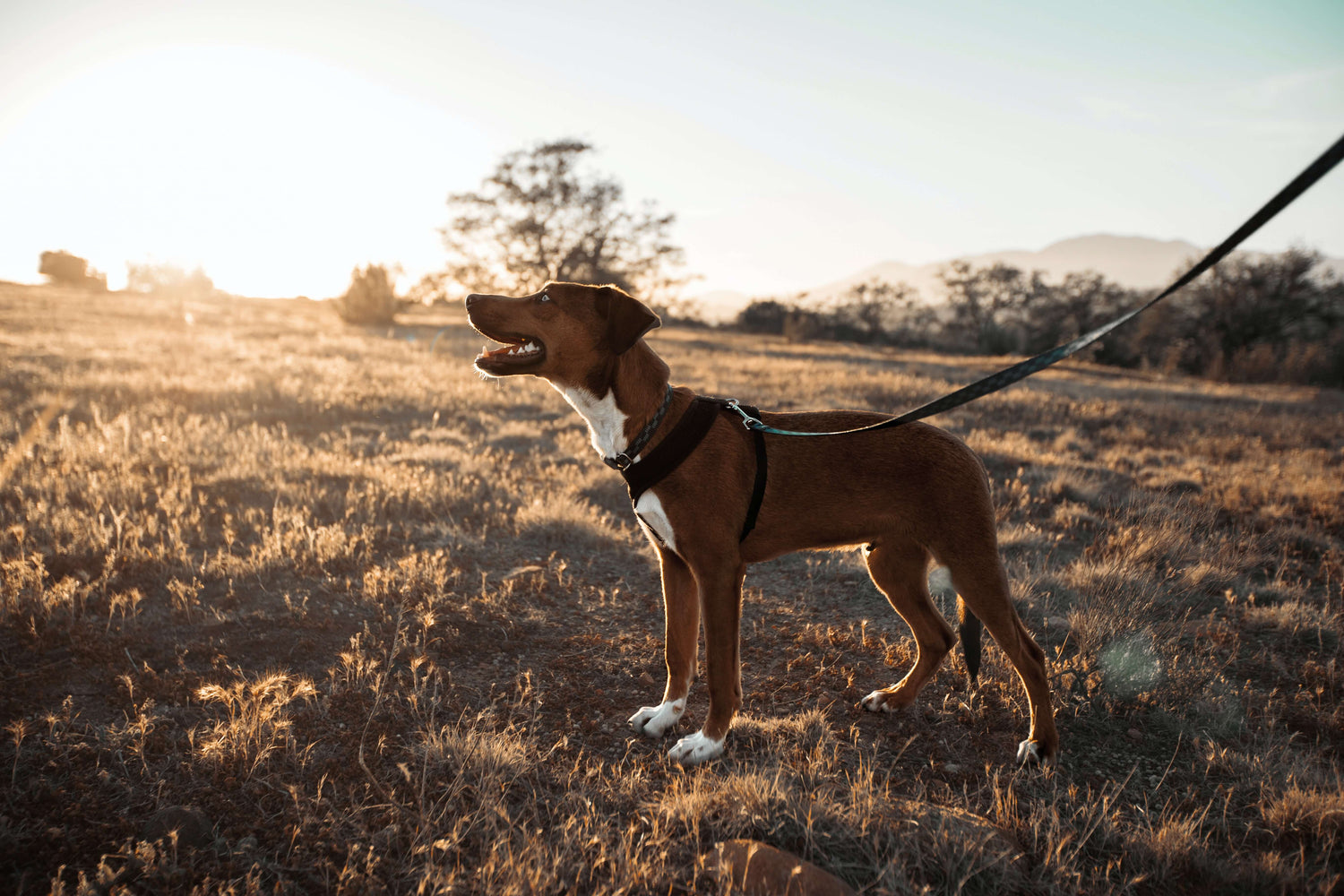Walking your dog should be an enjoyable and relaxing experience for both of you. However, if your furry friend constantly pulls on the leash, it can turn a pleasant walk into a frustrating ordeal. Fortunately, with patience, consistency, and positive reinforcement, you can teach your dog to walk calmly by your side. In this step-by-step guide, we'll outline an effective approach to stop your dog from pulling on a leash.
Step 1: Choosing The Right Dog Walking Tools
Equip Yourself with the Right Tools. Invest in a well-fitting harness or a front-clip harness, which provides better control compared to a collar or a back-clip harness. Choose a leash that is comfortable to hold and has a length suitable for your walking environment. The LifeHandle Hands-Free Leash is ideal :)
Step 2: Obedience Training Can Go A Long Way
Start with Basic Obedience Training. Teach your dog basic commands such as "sit," "stay," and "heel" in a controlled environment before incorporating them into your walks. This will establish a foundation for leash training and improve your dog's overall obedience.
Step 3: Loose-Leash Practice
Practice Loose-Leash. Walking at Home Start indoors or in your backyard with minimal distractions. Attach the leash to your dog's harness and hold it loosely. Begin walking, and as soon as your dog starts to pull, stop in your tracks. Wait for your dog to return to your side or loosen the tension on the leash before continuing. Reward your dog with treats and praise for walking calmly by your side.
Step 4: Dogs Love Positive Reinforcement
Utilize Positive Reinforcement. Reward your dog with treats and verbal praise each time they walk beside you without pulling. Positive reinforcement helps your dog associate walking calmly with rewards, reinforcing the desired behavior. Use high-value treats to make the rewards more enticing and reinforce the connection between good behavior and positive outcomes.
Step 5: Direction Change Practice Means Less Pulling
Change Direction. To discourage pulling, change your walking direction whenever your dog starts to pull. By doing so, you teach your dog that pulling will not get them where they want to go. Changing directions keeps your dog focused on you and helps maintain a loose leash.
Step 6: Shift Focus Throughout The Walk
Incorporate Training During Walks. Gradually introduce training exercises during your walks. Ask your dog to sit or stay at intervals, rewarding them for their compliance. This helps reinforce their focus on you and encourages them to pay attention to your commands while walking.
Step 7: Distractions Are Key
Use Distractions as Training Opportunities. While walking, your dog may encounter various distractions such as other dogs, people, or enticing smells. Use these situations as training opportunities. Practice commands such as "sit" or "leave it" to redirect your dog's attention and reinforce their impulse control.
Step 8: Increase The Distractions
Gradually Increase Distractions. As your dog becomes more proficient at loose-leash walking, gradually increase the level of distractions. Walk in busier areas, near other dogs, or in locations with tempting smells. Consistently reinforce good behavior with rewards and praise, and be patient as your dog learns to remain focused despite distractions.
Step 9: Patience and Consistency
Stay Consistent and Patient. Consistency is key to successful leash training. Practice daily and maintain a calm and patient demeanor during walks. Avoid yanking or pulling on the leash, as this can create tension and anxiety in your dog. Remember, progress takes time, so be patient and celebrate small victories along the way.
Step 10: Reach Out To A Professional
Seek Professional Help If Needed. If your dog's pulling persists despite your efforts, consider consulting a professional dog trainer or behaviorist. They can provide personalized guidance and techniques to address specific challenges and help you and your dog overcome leash pulling.
How long does it take to get your dog to stop pulling on a leash?
It generally takes 5-15 minutes a day for a week or two for dogs to start learning to not pull on a leash.
Teach Your Dog To Walk On A Leash Early-on
Teaching your dog to walk calmly on a leash requires patience, consistency, and positive reinforcement. By following this step-by-step guide, you can effectively stop your dog from pulling on a leash and transform your walks into enjoyable and stress-free experiences. Remember to always prioritize positive reinforcement, consistency, and patience throughout the training process.
